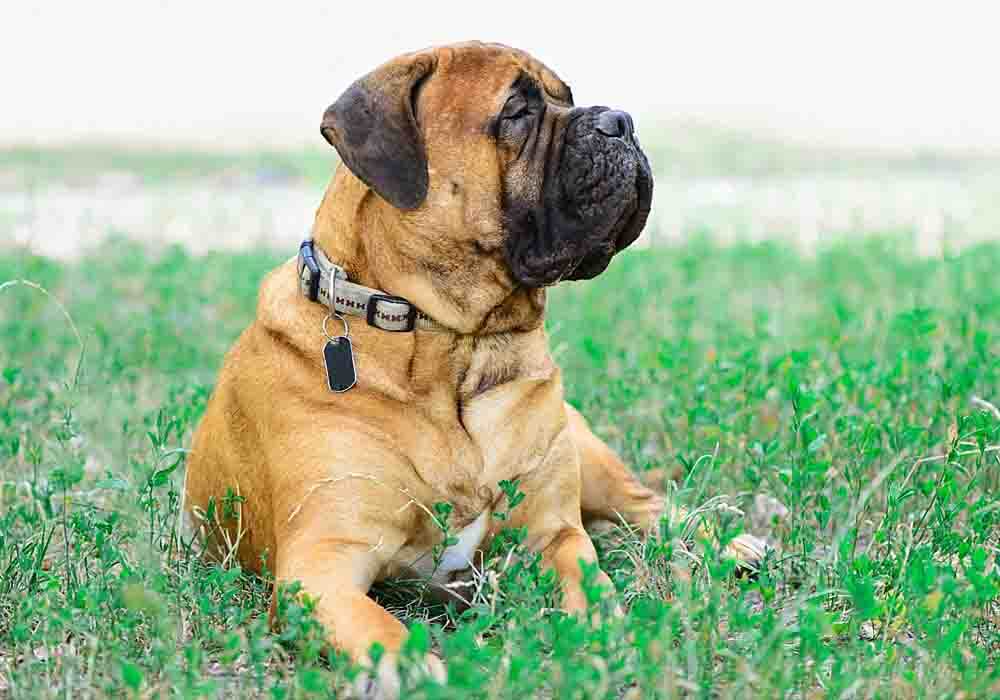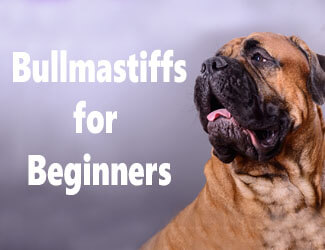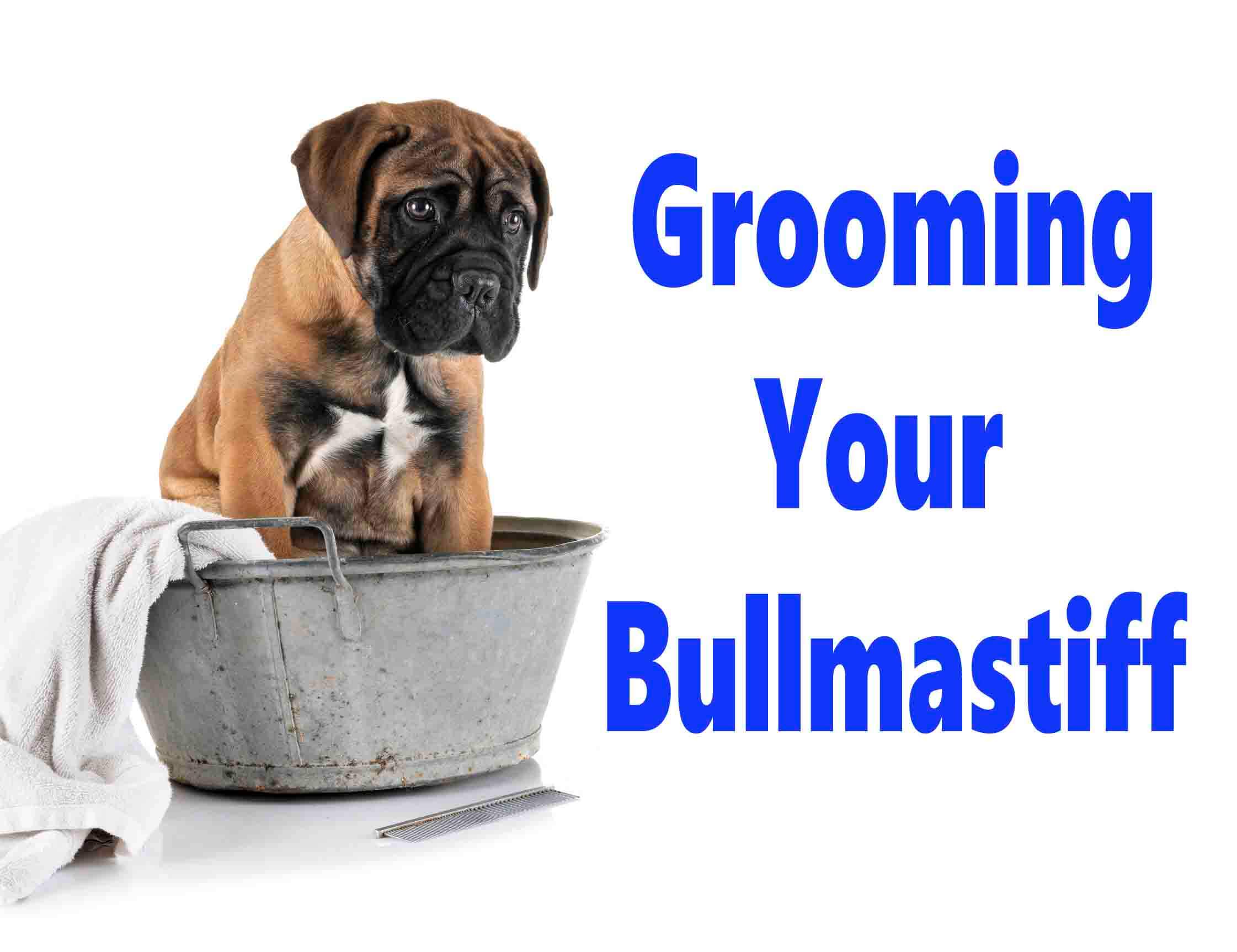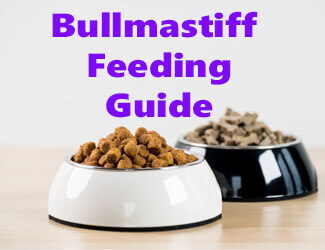Are Bullmastiffs Good
Family Dogs?
Top 10 Questions Answered
by Ken Alden
If you're wondering are Bullmastiffs good family dogs then you've come to the right place. These are giant dogs that have a history of being aggressive and dangerous. With their massive size and
heavy weight, many people believe the worst of these gentle giants. But is
there any truth to these claims?
Are Bullmastiffs Good Family Dogs?
These dogs are mild-mannered, quiet, calm, and demand affection. With the proper training and love, Bullmastiffs can make wonderful family pets in homes with children.
But there are quite a few things that are different about being the pet parent to a giant breed like a Bullmastiff. Let us start by saying this breed is not for a first-time dog parent. Keep reading to learn all you need to know about having a Bullmastiff as a family dog as we answer the Top 10 questions most frequently asked about this amazing dog. Read More Below...
Pro-tip: Ever try lifting a Bullmastiff? Their weight can hurt not only your back but their joints when they hop down from cars, sofas or even your bed. To protect your back and theirs check out the best Mastiff ramps on Amazon.com now.
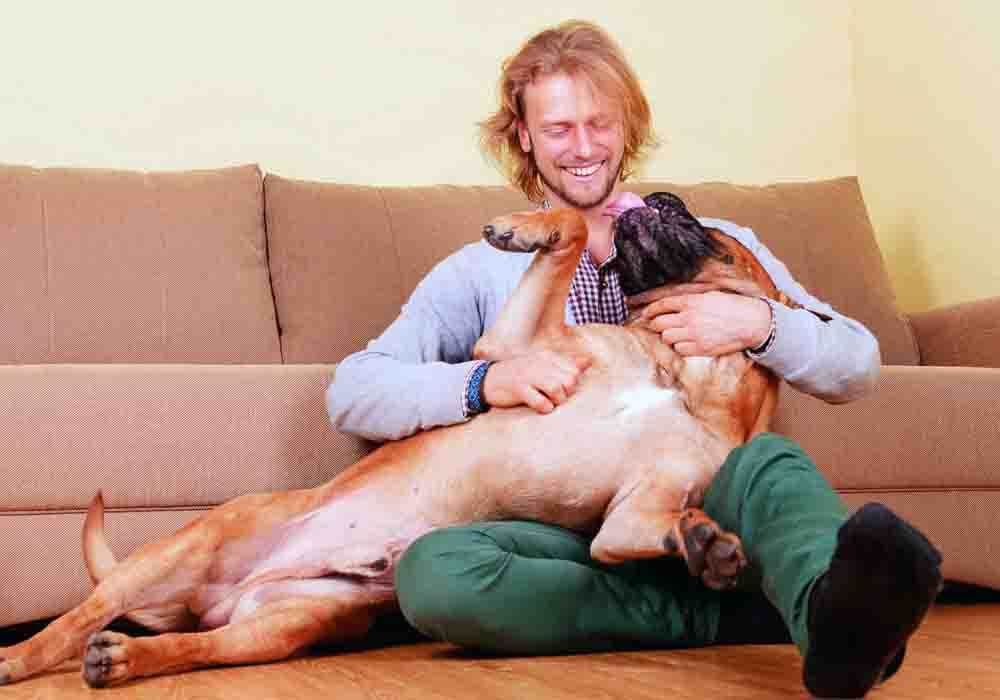
Are Bullmastiffs Friendly?
Are Bullmastiff good family dogs? With their family, Bullmastiffs are lovable, affectionate and downright awesome. They often forget that they are so big and will try to climb
into your lap. Remember that Bullmastiffs get huge, so they take up a lot of
space. Don't let them lay on the furniture as puppies if they won't get to as
giant adult dogs.
As a puppy, Bullmastiffs have playful energy that requires supervision. Even without being fully grown, this breed of dogs can accidentally injure babies or young children when they get excited and try to run around and play.
Around strangers, Bullmastiffs will be reserved but tolerant. If you trust them, so will your pooch. However, to make sure your pet knows how to behave around people they don't know, you have to start by socializing them at a young age.
Are Bullmastiffs Good With Babies and Toddlers?
Bullmastiffs are calm with mild tempers. They rarely bark, and they don't require a lot of exercise. With the proper training and socialization, a Bullmastiff will become your family's best friend.
It's wise to use supervision when allowing a large dog like a Bullmastiff around babies and toddlers. Children this young can get injured if your dog knocks them down or accidentally steps or sits on them, as the weight of the dog can be too much for the child to handle.
However, you should allow plenty of supervised
interaction between your children and your Bullmastiff, including babies. This
breed forms an intense bond with its family and should have frequent
socialization to build these relationships.

This article has the whole story about how Bullmastiffs are around kids and babies. It talks in detail about what to expect and how to mastiff-proof your home for the safety of your kids.
Are Bullmastiffs Good With Other Dogs and Cats?
Bullmastiffs require early socialization with people and other animals from a very young age to prevent them from developing aggressive tendencies. These dogs do best in a single-pet home. And they rarely do well with strange dogs coming into their domain.
In most cases, Bullmastiffs show aggressive tendencies towards other dogs of the same sex. Even if you raise your pets together, you should use supervision when letting two males be alone. are bullmastiffs good family dogs?
For homes that have cats, in most instances, you can bring a Bullmastiff into the family without incident. This breed typically tolerates a family cat as long as there isn't any interaction. If your cat likes to taunt the dog, there could be problems.
Bullmastiffs are not pushovers and won't tolerate another animal's abuse. Even if your Mastiff is just trying to play with the cat, it could accidentally cause injury due to the size.
Our helpful article here talks more about how Bullmastiffs get along with other pets

Here's an in depth article that more fully answers the question of how Bullmastiffs are around other dogs and cats. This is a must-read if you're considering bringing this dog home to other established pets.
Are Bullmastiffs Good Guard Dogs?
Many people find Bullmastiffs intimidating due to their giant size and alert, steady gaze that dutifully observes everything going on around them. Many people are hesitant to approach when they see such a big dog.
This fact makes Bullmastiffs a great deterrent against attack. They are also very protective of anything that revolves around their world, including their people, toys, bed, and yard.
Their protective nature makes Bullmastiffs
great guard dogs that will not hesitate to protect their family members against
harm. Because of this, you should never let your children engage in wrestling
or loud play around your Bullmastiff.
Pro-tip: Bullmastiff anxiety, aggression, destructive chewing, jumping up, fearfulness, and other behaviors can be controlled with the right training program.
Here’s a great course that
addresses these issues along with many other dog training basics: Check it out now!
Do Bullmastiffs Drool a Lot?
Many large breed dogs have an issue with drooling, and the Bullmastiff is no exception. Some reasons your pet might drool include:
- After drinking
- After eating
- After exercise
- When they’re hot
- When they're stressed
- When they smell food
The more your Bullmastiff's jowls - that's the skin that covers the jaw - sag, the more drool you'll have to clean up. are bullmastiffs good family dogs
Many Bullmastiff parents recommend keeping a
towel on hand to clean any drool from the floor, your furniture, or yourself.
Or you can buy a drool bib.
Learn more about Mastiff drool issues from our article that just drips with helpful information...
Do Bullmastiffs Shed a Lot?
Bullmastiffs don't have significant grooming needs. Their short, sleek coat never needs to be trimmed or styled. But you should do daily brushings with a wire comb or dog brush.
Bullmastiffs shed year-round, and like other short-haired breeds, when their hair comes off, it gets everywhere. This type of fur likes to get stuck in between the threads of your clothing and furniture, making it difficult to clean.
Brushing your pet's fur every day removes all
the dead hair, so it doesn't fall off around your house. You'll spend a lot of
time sweeping your floors if you don't dedicate the right amount of time to
grooming your Bullmastiff.
Pro Tip: Bullmastiffs don't need frequent bathing. You can get by with one every few months. However, you do want to be sure you keep your canine's skin folds cleaned. Bullmastiffs are very wrinkly dogs and are prone to skin infections.
You should use a wet cloth or pet wipes to clean your pet's folds. While it's best to do this every day, there's no harm if you only do it a few times a week. Be sure you dry the skin with a soft cloth after wiping them down.
Do Bullmastiffs Need Lots of Exercise?
Exercise requirements will differ depending on the age of your Bullmastiff. The most important thing to remember is that you don't want to let your Bullmastiff overexert. This breed of dog is okay with limited daily exercise, short walks should suffice.
Keep in mind that lugging around all that weight makes the pounding of a jog or any strenuous, prolonged exercise on this breeds joints and hips hard on the dog.
However, because Bullmastiffs have a predisposition to obesity, it is crucial that you control your pet's diet and that they get their required daily exercise.
Not only does daily exercise (in moderation) help keep your
pet's weight managed, but it will also assist them in retaining the proper
muscle mass and build that their body frame needs for healthy bones and joints.
- You don't want to let them do a lot of excessive running, jumping, or climbing stairs. While in the puppy stage, Bullmastiffs have soft bones, and too much exercise can cause injury to bones, joints, and ligaments.
- In general, adult Bullmastiffs have a lazy streak, so you won't have to worry about them always wanting to play. You might struggle with just getting them to fulfill their daily exercise needs.
- And you should be careful about the type of activities you do when it's hot or humid. Bullmastiffs don't do well in warm temperatures and can overheat quickly. Limit outdoor time to early in the morning or late afternoon.
Learn more about Mastiff exercise needs from our article which also offers some creative exercise ideas...
Are Bullmastiffs Easy to Train?
Bullmastiffs are extremely smart, and if you start with training at an early age, you'll have better results. Many pet owners recommend putting your Bullmastiff in puppy obedience school so they can receive formal training by professionals.
This breed of dog is known for being stubborn and pig-headed. They'll often try to test your limits by not doing what you say. To have the best results as a pet parent to a Bullmastiff, you have to know how to be in control of dogs who like to be dominant.
Mastiffs do not respond well to negative punishment and will do much better in training when you use positive reinforcement. are bullmastiffs good family dogs
Yummy treats, praise, and pets are great
rewards for a job successfully done. And your pet will likely continue to repeat
the desired behavior. This breed loves to please - when they're in the mood.
Pro-tip: Bullmastiff's (and their owners) love dog crates…and for good reasons. Crates keep dogs from mischief while you're away, are perfect for house training, for traveling by car, and provide the dog a place to de-stress. Check out the best Mastiff crates on Amazon.com now.
What's The Cost of Bullmastiff Puppies (in USD)
The price of a Bullmastiff puppy is quite substantial. Some factors will determine the final price tag, including bloodline - some dogs have breeding papers and cost more - location, availability, and demand.
You can typically find a Bullmastiff puppy for around $1500, give or take. You can expect to pay between $1,000 and $2,000, depending on the seller.
Before you purchase a puppy, make sure the seller isn't part of a puppy mill - an establishment that breeds animals in poor conditions with the sole purpose of selling the puppies for a profit.
If possible, get a health certificate of the
pup, including any vaccinations it might have had, as well as any familial
medical history you should be aware of such as genetic diseases.
What Is the Bullmastiff Cost of Ownership?
To be a good pet parent for a Bullmastiff, you don't just have to know how to be confident and dominant. You also have to be prepared to cover the financial costs that come along with owning a large breed dog like the Bullmastiff.
There are a few costs that you should consider
before buying a Mastiff. You wouldn't want to become attached to your newest
family member only to realize you have to give him up for adoption because you
can't fit the cost of his care into your budget.
Below we've listed all of the things that it will take to support your Bullmastiff throughout the year with food being your highest yearly expense barring any medical emergencies.
All things considered you can expect your dog to cost your family from between $1500-$2500 (in USD) yearly to support. Expect these following expenses....
Food...
Bullmastiffs are enormous dogs, growing up to 26 inches tall (66cm) and up to 130 pounds (59kgs) in weight. The food costs you'll encounter can also be huge. These dogs can eat up to four cups of dry kibble a day.
Bullmastiffs need a lot of protein in their
diet, so you'll have to pick the appropriate food. High-quality dog foods that
would provide the proper nutrition for your large breed dog can be pricey.
This helpful article of ours goes more in depth on yearly food costs to expect.
Vaccinations...
All pets should get the appropriate vaccinations for their age for up to one year. These vaccinations are crucial to keeping your pet healthy. You can do these yourself, or you can take your pet to the vet where she'll also get a checkup.
It's best to have at least one vet visit a
year so you can be aware of any problems that might not be currently showing
symptoms. Your vet is also a great resource if you ever have questions or
concerns about your pet's behavior or health.
Supplies...
When you sign on to bring a dog into your home, that means you agree to love it and make it part of your family until the day it goes across The Rainbow Bridge. This pledge also means that you agree to supply your pooch with all the things they will need, including:
- A comfy, appropriately sized dog bed
- Food and water bowl - preferably raised to avoid conditions like bloat
- Toys
- Treats
- Bathing and grooming supplies (combs, shampoo, toenail clippers, towels, toothbrush)
- Collar and leash (or harness)
- Bones
- Crate - If you have to keep your pet put up while you're away or for traveling
- Medications - All pets should take heartworm prevention
medicine, as well as flea and tick and worm treatments by prescription either
monthly or yearly.
Are Bullmastiffs Good Family Dogs...Final Thoughts
Bullmastiffs make great family pets for the right parents!
If you don't mind a dog that drools, has
excessive flatulence, and is large and downright clumsy, you might be
interested in making a Bullmastiff part of your family. But remember, a
Bullmastiff isn't a beginner dog. And he's better in a single pet
household.
If you're looking for a pet that you won't
butt heads with, the stubborn alpha Bullmastiff won't be for you. But if you
want a lovable independent giant to teach you about love, loyalty, and
protectiveness, adopt a Bullmastiff as your family dog.

About the Author...
Ken Alden, a dedicated Mastiff owner for over eight years, is acclaimed for his expertise in care, grooming, and training. Read more About Me and my dog Shadow.
- Mastiff Guide Home ›
- Bullmastiff Breed Info ›
- Are Bullmastiffs Good Family Dogs?



